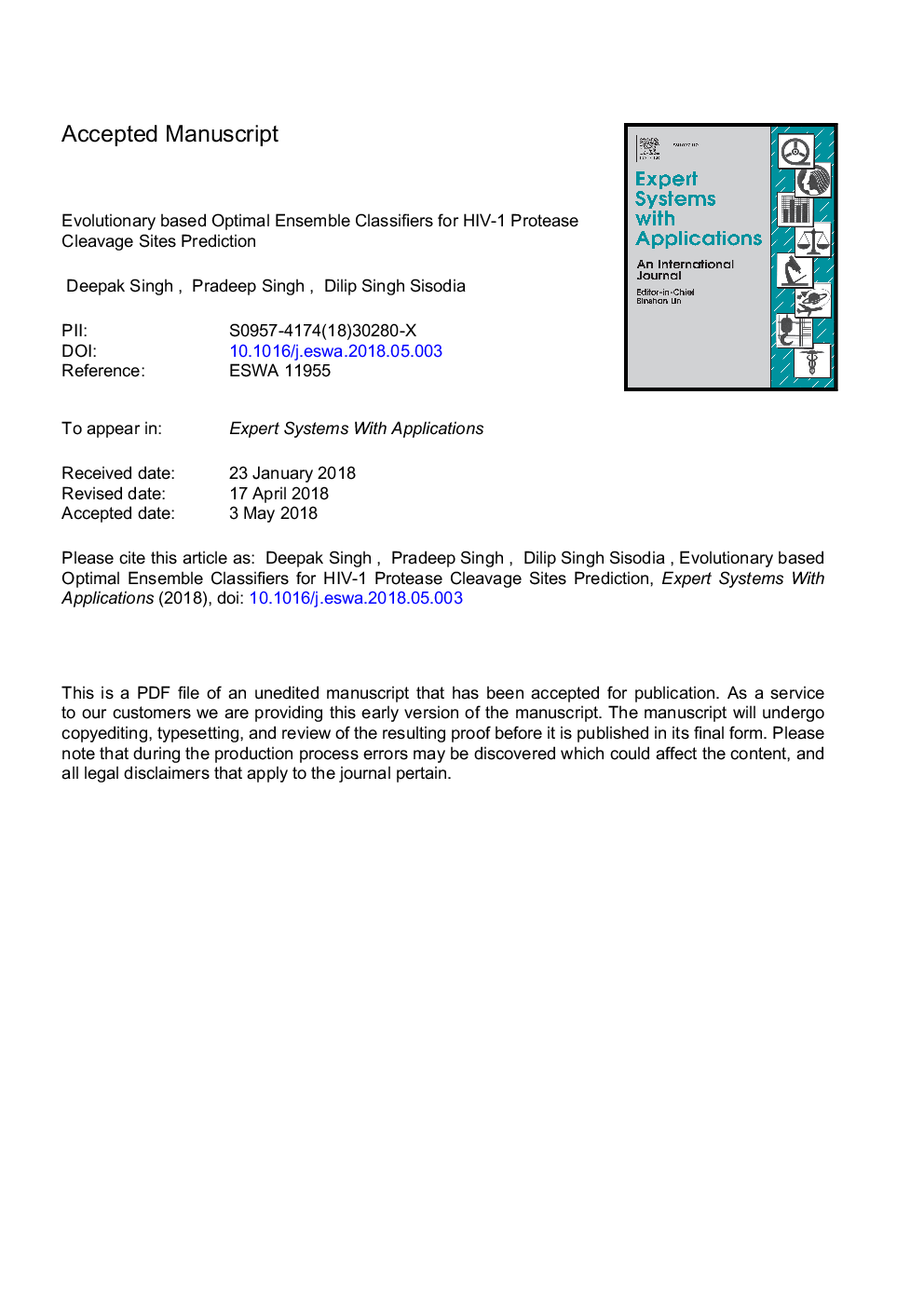| Article ID | Journal | Published Year | Pages | File Type |
|---|---|---|---|---|
| 6854852 | Expert Systems with Applications | 2018 | 21 Pages |
Abstract
HIV-1 protease site helps to understand the specificity of substrates which antagonizes AIDS by restraining the replication of HIV-1 through inhibitors. Identification of HIV-1 protease cleavage sites by experimental methods are usually labor-intensive thus time-consuming. Several computational intelligence methods have been evaluated to predict cleavage sites. However, due to inconsistent findings regarding the superiority of one classifier over another and the usefulness of encoding techniques in general, more research is needed to provide advance confidence in computational results. The success of an HIV cleavage site prediction system depends heavily on two things: the classifier being used and the features encoding technique applied. For the cleavage sites identification, the role of appropriate feature encoding has not been paid adequate importance. In this investigation, we use two novel ideas for HIV Cleavage site prediction. First, we propose an optimal ensemble formation technique that optimizes the search space of 228 formed by seven encoding techniques and four SVM kernels (7â¯Ãâ¯4) with the use of genetic algorithm. The second is the utilization of area under receiver operating characteristics (AUC) as a fitness measure for the evaluation of optimal ensemble. The evolutionary algorithm is encoded with binary strings to decide the correlation between the encoding-classifier pair in an ensemble. The proposed method with new ensembling encoding-classifier pair increases the HIV cleavage site prediction significantly. Overall, an appealing degree of predictive accuracy is observed by evolutionary-based ensemble model and hence becomes a valid and best alternative for peptide classification.
Related Topics
Physical Sciences and Engineering
Computer Science
Artificial Intelligence
Authors
Deepak Singh, Pradeep Singh, Dilip Singh Sisodia,
